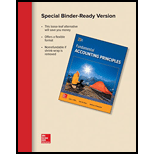
Concept explainers
Ratio analysis is used to analyze financial and operating performance of a company. Basically it is a quantitative analysis of data and information contained in the financial statement.
Gross margin ratio indicates that how much profit company has earned after its cost of goods sold. In percentage terms it is calculated gross profit divided by total revenue.
Net Margin ratio indicates that how much Profit Company has earned after all its operating expenses, finance cost and non-cash items. Basically, it is net earnings after all incomes and expenses.
Current ratios show the liquidity position of the company. It reflects company’s ability to pay off the short term liabilities from short term/ current assets.
Acid test ratio is also known as Quick ratio. It highlights the short term liquidity and solvency of the company. Basically, only liquid current assets are considered for calculation of this ratio.
Debt ratio is a financial ratio that depicts the leverage position i.e. it shows the total debt proportion to the total assets.
Equity ratio measures the total equity proportion to the total assets i.e. how much is the contribution of equity shareholders in total assets.
To calculate:
In the given question, we have to calculate the below ratios:
- Gross margin ratio and net profit margin ratio ( with and without service revenue) in percentage terms for profitability analysis
Current ratio and acid test ratio to measure the liquidity and solvency- Debt ratio and equity ratio to measure leverage position
- Percentage of current and long term assets in total assets
Want to see the full answer?
Check out a sample textbook solution
Chapter 17 Solutions
Loose Leaf for Fundamental Accounting Principles
- Please explain the solution to this General accounting problem with accurate principles.arrow_forwardCalculate the cost of goods sold.arrow_forwardMitchell's Home Furnishings made Net Sales Revenue of $180,000, and the Cost of Goods Sold (COGS) totaled $108,000. What is the gross profit percentage for this period? a. 50% b. 40% c. 30% d. 60% HELParrow_forward
- General accounting questionarrow_forwardCorrect solution and accountingarrow_forwardSims Inc. had a $195,000beginning balance in Accounts Receivable. During the year, credit sales totaled $820,000, and collections from customers amounted to $700,000. What was the net amount of receivables included in current assets at the end of the year, before any provision for doubtful accounts?arrow_forward
- I need help with this general accounting question using standard accounting techniques.arrow_forwardProvide right answerarrow_forwardOn August 1, the accounts receivable account balance of Jenson Corp was $84,200. During August, $312,000 was collected from customers on account. Assuming the August 31 balance was $81,600, determine the fees billed to customers on account during August.arrow_forward

 AccountingAccountingISBN:9781337272094Author:WARREN, Carl S., Reeve, James M., Duchac, Jonathan E.Publisher:Cengage Learning,
AccountingAccountingISBN:9781337272094Author:WARREN, Carl S., Reeve, James M., Duchac, Jonathan E.Publisher:Cengage Learning, Accounting Information SystemsAccountingISBN:9781337619202Author:Hall, James A.Publisher:Cengage Learning,
Accounting Information SystemsAccountingISBN:9781337619202Author:Hall, James A.Publisher:Cengage Learning, Horngren's Cost Accounting: A Managerial Emphasis...AccountingISBN:9780134475585Author:Srikant M. Datar, Madhav V. RajanPublisher:PEARSON
Horngren's Cost Accounting: A Managerial Emphasis...AccountingISBN:9780134475585Author:Srikant M. Datar, Madhav V. RajanPublisher:PEARSON Intermediate AccountingAccountingISBN:9781259722660Author:J. David Spiceland, Mark W. Nelson, Wayne M ThomasPublisher:McGraw-Hill Education
Intermediate AccountingAccountingISBN:9781259722660Author:J. David Spiceland, Mark W. Nelson, Wayne M ThomasPublisher:McGraw-Hill Education Financial and Managerial AccountingAccountingISBN:9781259726705Author:John J Wild, Ken W. Shaw, Barbara Chiappetta Fundamental Accounting PrinciplesPublisher:McGraw-Hill Education
Financial and Managerial AccountingAccountingISBN:9781259726705Author:John J Wild, Ken W. Shaw, Barbara Chiappetta Fundamental Accounting PrinciplesPublisher:McGraw-Hill Education





